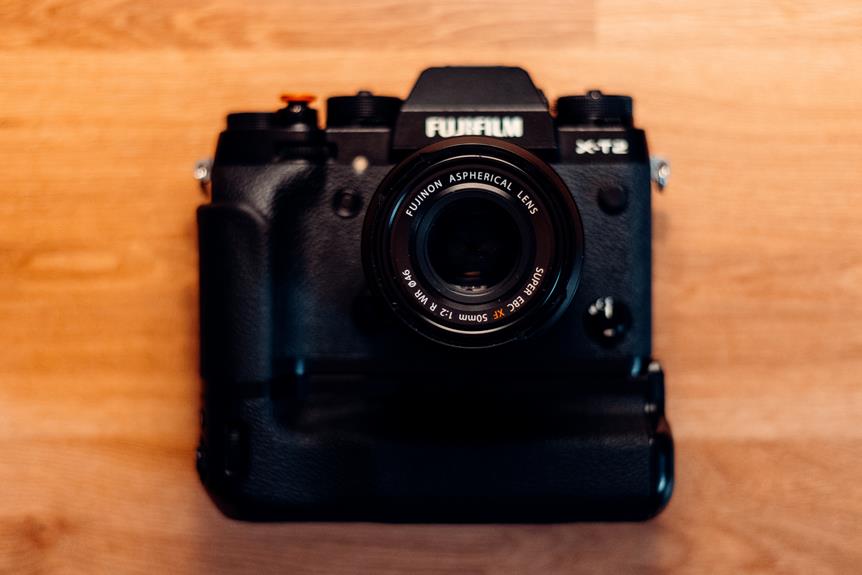What Is Woman Body Image and Media Influence

Did you know that 80% of women feel dissatisfied with their bodies? This alarming statistic sheds light on the pervasive influence of media on women’s body image.
From airbrushed magazine covers to highly curated social media feeds, the media bombards us with unrealistic beauty standards.
This article explores the impact of media on women’s body image, discussing the portrayal of ‘ideal’ body types, the role of social media, and the influence of advertisements.
By understanding these dynamics, we can work towards promoting body positivity and diversity in the media.
Key Takeaways
- Unrealistic beauty standards perpetuated by the media have led to 80% of women feeling dissatisfied with their bodies, highlighting the harmful impact of these standards on self-esteem.
- Media portrayals of ‘ideal’ body types bombard us with images that do not reflect the diversity of beauty, emphasizing the need for inclusive representation in the media.
- Social media platforms exacerbate beauty standards, both positively by promoting diversity and self-expression, and negatively by facilitating comparison and enhancing feelings of inadequacy.
- Advertisements play a significant role in promoting unrealistic beauty standards, leading to negative self-perception among women and a desire to conform to societal ideals. Challenging and redefining these beauty norms is essential.
The Impact of Unrealistic Beauty Standards
The perpetuation of unrealistic beauty standards in media and advertising continues to shape societal perceptions of attractiveness and undermine individuals’ self-esteem.
The media’s role in portraying an idealized version of beauty creates a constant pressure on individuals to conform to these unrealistic standards. This pressure is particularly harmful to vulnerable populations who may already struggle with body image issues.
Society’s obsession with thinness and flawless appearance places an enormous burden on individuals, leading to feelings of inadequacy and low self-worth. The media’s influence is pervasive, infiltrating all aspects of our lives, from television shows to social media platforms.
It is crucial for society to recognize the detrimental effects of these beauty standards and work towards promoting diversity and inclusivity. By challenging societal pressure and embracing different definitions of beauty, we can foster a healthier and more accepting environment for all individuals.
Media Portrayals of “Ideal” Body Types
Within the realm of media, the constant bombardment of images showcasing and glorifying the ‘ideal’ body types can contribute to the perpetuation of unrealistic beauty standards and the detrimental impact they have on individuals’ self-perception and mental well-being.
These images often focus on a narrow definition of beauty, leading individuals to compare themselves to these unattainable standards. However, there has been a shift in recent years with the rise of body positive movements. These movements aim to challenge societal norms and promote acceptance of diverse body types.
Cultural differences in body ideals also play a significant role in shaping individuals’ perceptions of beauty. Different cultures have unique standards of beauty, influenced by factors such as history, traditions, and social values.
The impact of body positive movements and cultural differences in body ideals highlights the need for a more inclusive and diverse representation of beauty in the media.
This transition into the subsequent section about the role of social media in shaping body image is crucial as it further explores how these platforms contribute to the perpetuation of unrealistic beauty standards and the potential for positive change.
The Role of Social Media in Shaping Body Image
Social media platforms, such as Instagram and TikTok, play a pivotal role in both exacerbating and challenging societal beauty standards, shaping individuals’ body image perceptions. On one hand, these platforms can perpetuate unrealistic beauty standards, leading to negative body image and self-esteem issues. On the other hand, they also provide a platform for the body positivity movement, encouraging self-acceptance and challenging societal norms.
To further understand the impact of social media on body image, consider the following table:
| Positive Effects of Social Media | Negative Effects of Social Media |
|---|---|
| Promotes body diversity | Facilitates comparison |
| Encourages self-expression | Promotes unrealistic beauty |
| Provides support and community | Amplifies appearance-focused culture |
| Celebrates different body types | Enhances feelings of inadequacy |
| Empowers individuals | Increases body dissatisfaction |
While social media has the potential to promote body positivity and self-acceptance, it is essential to recognize its negative impact on mental health. This discussion transitions into the subsequent section, which examines the influence of advertisements on women’s body image.
The Influence of Advertisements on Women’s Body Image
Advertisements play a significant role in shaping women’s body image by promoting unrealistic and often unattainable standards of beauty. These advertisements perpetuate negative self-perception among women, leading to dissatisfaction with their own bodies and a desire to conform to societal ideals.
Additionally, the influence of social media amplifies the impact of these advertisements, creating a constant stream of comparison and pressure to meet these unrealistic standards.
Media’s Ideal Body Standards
The portrayal of thinness in media perpetuates unrealistic beauty standards for women. The constant bombardment of images featuring thin and flawless models creates unrealistic beauty expectations that can be detrimental to women’s self-image and overall mental health.
The body acceptance movement has gained momentum in recent years, promoting the idea that beauty comes in all shapes and sizes. However, the media continues to showcase a narrow definition of beauty, leading many women to feel inadequate and dissatisfied with their own bodies.
This emphasis on thinness can have negative self-perception effects, such as low self-esteem, body dissatisfaction, and even the development of eating disorders.
It is crucial to challenge these unrealistic beauty standards and promote a more inclusive and diverse representation of women in the media.
Negative Self-Perception Effects
Frequently reinforced by media, negative self-perception effects can arise from the unrealistic beauty standards imposed on women through advertisements. These effects can include low self-esteem, body dissatisfaction, eating disorders, and mental health issues.
To delve deeper into the topic, consider the following points:
- Unattainable beauty standards: Advertisements often promote an idealized image of beauty that is impossible for the majority of women to achieve.
- Comparison and self-judgment: Social media platforms exacerbate these effects by providing a constant stream of carefully curated images that invite comparison and self-judgment.
- Distorted body image: Exposure to these unrealistic standards can lead to a distorted perception of one’s own body, causing dissatisfaction and negative self-perception.
- Impact on mental health: The pressure to conform to these standards can contribute to anxiety, depression, and other mental health issues.
- Need for change: It is crucial to challenge and redefine societal beauty norms to promote body positivity and self-acceptance.
Understanding the role of social media in perpetuating these beauty standards is essential to address this issue effectively.
Role of Social Media
Social media’s impact on women’s body image is a complex amalgamation of societal pressures, idealized representations, and comparison culture.
In today’s digital age, influencers play a significant role in shaping societal beauty standards and influencing women’s perception of their own bodies. With their massive online following, influencers hold a great responsibility to promote body positivity and realistic representations.
However, many influencers continue to perpetuate unrealistic beauty ideals, which can have detrimental effects on women’s mental health. Constant exposure to carefully curated images of flawless bodies can lead to feelings of inadequacy, low self-esteem, and even eating disorders.
As such, it is crucial for influencers to recognize the power they hold and use their platforms to promote diverse body types, self-acceptance, and mental well-being. By doing so, they can contribute to a more positive and inclusive online environment for women.
Media’s Effect on Self-Esteem and Body Dissatisfaction
The media’s portrayal of unrealistic beauty standards has a profound effect on individuals’ self-esteem and body dissatisfaction. Constant exposure to images of perfect bodies can lead to feelings of inadequacy and a negative perception of one’s own appearance.
This can have serious consequences, such as the development of eating disorders and other mental health issues.
Unrealistic Beauty Standards
Numerous studies have shown that pervasive exposure to airbrushed and digitally altered images in media contributes to the perpetuation of unrealistic beauty standards, leading to negative impacts on women’s self-esteem and body satisfaction. This issue has sparked a significant discussion around the world, with many individuals and organizations advocating for a change in the way beauty is portrayed in the media.
The body acceptance movement has gained momentum as a response to these unrealistic beauty standards. Here are some key points to consider:
- Unrealistic beauty standards can lead to feelings of inadequacy and low self-worth.
- Media influences how individuals perceive themselves and others.
- The body acceptance movement aims to promote self-love and acceptance of diverse body types.
- Increasing representation of different body types in media can help challenge these unrealistic beauty standards.
- Education and awareness about the harmful effects of media on body image are crucial in fostering a positive body image culture.
Negative Impact on Self-Esteem
A recent study has highlighted the significant negative impact on self-esteem that is caused by the media’s portrayal of unrealistic beauty standards. The media’s influence on society is undeniable, and it often perpetuates unattainable ideals of beauty, placing immense societal pressure on individuals, particularly women.
This study emphasizes the detrimental effects this can have on one’s self-esteem. Women are bombarded with images of flawless models and celebrities, leading to feelings of inadequacy and low self-worth. The constant comparison to these unrealistic standards can result in body dissatisfaction and even contribute to the development of mental health issues such as eating disorders and depression.
As individuals who desire to serve others, it is crucial to recognize and challenge these harmful beauty standards and promote a more inclusive and realistic representation of beauty in the media.
Body Dissatisfaction Consequences
An increasing body of research suggests that the media’s effect on self-esteem and body dissatisfaction can have severe consequences for individuals’ mental and emotional well-being. The constant exposure to idealized and unrealistic beauty standards portrayed in the media can lead to unhealthy comparison and feelings of inadequacy. This, coupled with societal pressures to conform to these standards, can contribute to low self-esteem, body dysmorphia, and even the development of eating disorders.
The media’s portrayal of thinness as the ideal body type. The use of airbrushing and photoshopping to create unattainable beauty standards. The lack of diversity in body shapes, sizes, and ethnicities represented in the media. The perpetuation of harmful stereotypes regarding beauty and attractiveness. The negative impact of social media and online platforms, which magnify the comparison and pressure.
To address these issues, it is crucial to promote body positivity and diversity in the media. By showcasing a wider range of body types, sizes, and ethnicities, individuals can feel validated and represented. Moreover, promoting self-acceptance and emphasizing the importance of inner beauty can help combat the harmful effects of unrealistic beauty standards.
Promoting Body Positivity and Diversity in the Media
The media’s portrayal of diverse body types is crucial in promoting body positivity and inclusivity among individuals of all backgrounds.
In recent years, the body acceptance movement has gained momentum, with many individuals advocating for a shift towards a more inclusive and diverse representation of bodies in the media.
Body positive influencers have played a significant role in challenging societal norms and promoting self-acceptance. By showcasing a range of body types, these influencers have helped to break down stereotypes and celebrate the beauty of all bodies.
Moreover, their empowering messages of self-love and acceptance have resonated with many, providing a much-needed counterbalance to the unrealistic beauty standards perpetuated by the media.
It is essential for the media to continue championing body positivity and diversity, as it has the power to shape societal perceptions and foster a culture of acceptance and inclusivity.
Frequently Asked Questions
How Do Unrealistic Beauty Standards Affect Men’s Body Image?
Unrealistic beauty standards can negatively impact men’s self-esteem and body image. Media literacy plays a crucial role in helping men develop a critical understanding of the media’s influence on their perception of beauty and promoting healthier body ideals.
What Are the Long-Term Consequences of Media’s Influence on Body Image?
The long-term effects of media on body image can have significant psychological implications. Exposure to unrealistic beauty standards can lead to low self-esteem, eating disorders, and body dissatisfaction, impacting individuals’ mental well-being.
How Can Parents Help Their Children Develop a Positive Body Image in a Media-Saturated Society?
Parents play a crucial role in helping their children develop a positive body image in a media-saturated society. By actively engaging in conversations about media literacy and promoting self-acceptance, parents can counteract negative influences and foster a healthy self-image.
What Steps Can Individuals Take to Resist the Negative Impact of Advertisements on Their Body Image?
Individuals can resist negative impacts of advertisements on their body image by participating in the body positivity movement, promoting media literacy, and challenging unrealistic beauty standards. These steps empower individuals to redefine beauty and develop a positive self-image.
Are There Any Countries or Cultures That Have Successfully Challenged and Changed Beauty Standards Perpetuated by the Media?
Alternative approaches and cultural shifts have been observed in certain countries and cultures where beauty standards perpetuated by the media have been successfully challenged and changed. These examples demonstrate the potential for positive change in body image perceptions.








